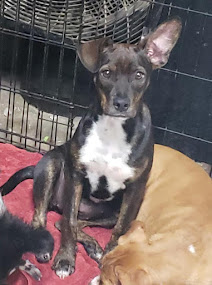Sunflowers remind me of Summer with their bright colors and bees buzzing around.
One of the best things about sunflowers is how easy they are to grow!
One of the best things about sunflowers is how easy they are to grow!
Sunflowers add so much color to the garden. They're so bright and beautiful, naturally attracting bird and beneficial pollinators, including bees.
An annual plant, sunflowers have big, daisy-like flower faces of bright yellow (or red) petals.
Sunflowers grow best in locations with full sun. They are hardy flowers and will grow in any kind of soil as long as it is not waterlogged.
Sunflower seeds, leaves and stems emit substances that inhibit the growth of certain other plants. They should be separated from potatoes and pole beans.
It's best to sow sunflower seeds directly into the soil after the danger of spring frost is past. Ideally, the soil temperature has reached 55 to 60 degrees F.
Space seeds about 6 inches apart in a shallow trench and sow 1/4 inch to and 1 inch deep depending on the seed size. Smaller seeds don't need to be planted very deep while larger seeds should be planted 1 inch deep. Make rows about 30 inches apart. (For very small varieties, plant closer together.)
Cover and keep watered until seeds sprout in 7 to 10 days. When first true leaves appear (the second set of leaves); thin plants to about 2 feet apart.
Feed plants sparingly; overfertilization can cause stems to break in the fall. You can add diluted fertilizer into the water, though avoid getting the fertilizer near the plant's base; it may help to build a moat in a circle around the plant about 18 inches out.
Harvesting for flowers:
Cut stems early in the morning. Harvesting flowers during middle of the day may lead to flower wilting
Handle sunflowers gently. The flowers should last at least a week in water at room temperature
Harvesting for Seeds:
To harvest seeds, keep an eye out for ripeness. The back of the flower head will turn from green to yellow and the bracts will begin to dry and turn brown; this happens about 30 to 45 days after bloom and seed moisture is about 35%. Generally, when the head turns brown on the back, seeds are ready for harvest.
To protect the seeds from birds, you can cover the flowers with a light fabric (such as cheesecloth) and a rubber band.
Cut the head off the plant (about 4 inches below the flower head) and remove the seeds with your fingers or a fork.
Feeding Birds
A lot of people leave a few plants to share with the birds.
It's a nice way to give back to nature.
and of course, they love them.
You can even plant a smaller head variety for them specifically.
Whatever size they do make for beautiful arrangements also.
















































































